Preview #1:
Look at that S.W.A.G.
Former AC swimmer John Cotton rode a Harley to Sturgis by way of AC Legends this month, and all he brought back for me was this awesome Austin College water polo shirt. In Boston, they’d say that shirt is a wicked pissa. The Roos happen to be competing in the “Bahston” area in water polo Labor Day weekend. Also, the next Roo Tale has an interesting connection to the very school against which the Roos are competing. Some place called Hahvahd.
A lot of weekend Roo writing (Wroo writing?) will take us to the Boston, MA area over the weeks to come. Boston happens to be my former hometown from the 1990s. It’s a pretty awesome place to go to school and start a career. But, I’ll be honest. The winters eventually got the better of me and the lure of home took me back to Texas. Winters are legendary there. Everyone still talks about the 89 inches of snowfall in 1978. I was around for the 86 inches in 1994. 2015, with 109 inches, topped them all.
I knew a bunch of fine folks in Boston while I was working there.
Joe Micale was my first boss at Putnam Investments. Joe & I later both worked alongside Ann Ajemian Reitman and An-Chian Kao. Dianne & I went up to Boston in the summer of 2015 for a grad school reunion, and over lunch Joe just shook his head thinking about the ridiculous accumulation that previous winter. Come on down to Texas Micale!
Paige Norton was in Boston by way of Nebraska, before moving back to New York. Jim Caffrey and Mary Caffrey became good friends, in part due to work on a campaign for the Massachusetts governorship. Jim is now running for public office in Illinois. Vote Caffrey in November!
But Roos are everywhere, and I hung out with AC folks in Boston too. Richard Gudmundsen moved up from Texas and lived on an air mattress in my triple deckah in Quincy, MA; he eventually started a career in IT. A lesson for the kids out there: when your buddy is talking to a cute girl at a party, mentioning his impoverished existence on an air mattress does not help the cause.
Roo Wayne Whitmire came up for a Celtics game at the Gahden (the old one! it’s gone now). Roos Todd Treible and Sridhar Yaratha did the same for a Red Sox game at Fenway (the other old one! it’s still there).
Patrick Fogarty and David Vance made their way briefly, but decided 80 inches of snow was just not their thing. Frank Tooley, a Nebraska native, was ok with 80 inches of snow. He hung around longer than I did. Between gigs at Gillette in Boston and Harley Davidson in Milwaukee, Frank worked in market research for Dunkin Donuts.
Ahhhhhh Dunkin Donuts. It’s a Massachusetts institution. There are nearly 1,200 locations in the state alone, and you can fit 25 Massachusetts into the State of Texas. The original Dunkin? It’s a small store in Quincy, just a mile down the road from my old apartment. After a night of brutal New England cold on an air mattress, you better believe Rich was on his way to get a cruller and a coffee.
That’s the secret of Dunkin. It’s the coffee. As Frank would often say, “best coffee in the country.” Maybe that’s true. Or maybe any coffee during a sub-zero nor’easter is the best coffee in the country. Either way, that’s how you start the day in frigid Bahston. That coffee was essential in the spring of 1997 during the freak April Fools Day snowstorm.
Eventually, work at Putnam Investments took me north to Andover, MA near the New Hampshire border. They got Dunkins there as well. Rich and my favorite one was just across the border in Salem, NH. The drive-in had an explicit sign when ordering:
“NO COMPLICATED ORDERS”.
Uh, that’s a bit vague huh?
“I’d like three coffees and four jelly filled…..”
“Sorry, too complicated. Move along.”
But my all-time favorite Dunkin location is in Everett, MA. If you take Route 16 east from Medford to Revere for some Kelly’s Roast Beef, you pass two Dunkins within 100 feet of each other. For convenience, one is on the north side of the street, the other on the south side. We can’t have drivers actually making LEFT HAND TURNS for coffee now can we? And forcing drivers to “bang a uey” is unacceptable. If it’s a Dunkin you want in Tom Brady town, you got it.
My Boston days are behind me, but they’re full of good stories. We have Dunkin down here in Austin, TX, but it’s just not the same. I’m sure my Massachusetts neighbor Michelle Hoey Schneider would agree with me. You can’t have Dunkin in 100F weather. You need to feel a Canadian cold front on your face, all the while listening to a Red Sox fan with an accent that sounds like fingernails on a chalkboard talk about his great seats on the Monstah.
So, it’s Beantown! A lot of writing to come about Boston, which shows up in the next Roo Tale.
The title of that Roo Tale is: “The Birthplace of Texas College Football.”
The first college football game of the year kicks off in Massachusetts this afternoon. That’s followed by the first game in Texas this evening, when Rice takes the field. You can watch Rice play on ESPN+. Guess who else is playing on ESPN+ next weekend? That’s right. AC @ Harvard in water polo.
Hey, AC Water Polo: I’m sure Logan airport has 2 or 3 or 40 Dunkees. Grab a coffee on the way back to Sherman. Go Roos. Beat Harvard.




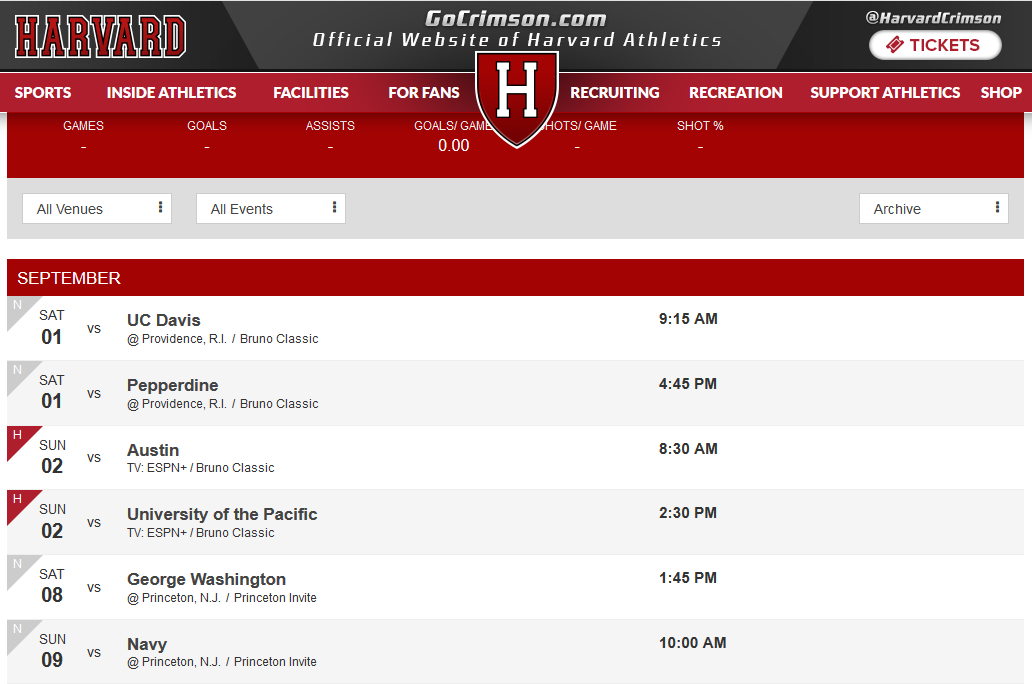

Preview #2:
Did y’all catch the broadcast of the AC football game on CollegeTVTicket? Boy was I impressed. Former Roo footballers Kirk Hughes (play-by-play) and Blake Hyde (color) sounded like a polished machine. A young Roos team fell in a close one to a nationally ranked NAIA squad from SAGU, but otherwise it looked like a great afternoon at Calder stadium. I enjoyed listening to the call and seeing the old neighborhood in Sherman.
Man, do Dianne and I have a great neighborhood down here in SW Austin too. It’s just one street, but boy do we represent. We’ve got neighbors from all over the country.
They all think I’m nuts. It’s all Austin College all the time online. Give it a rest, Marc. Don’t I write about anything else? Ehh, every now and then. They just roll their eyes at yet another Roo post.
Funny thing though. I can tie Austin College to pretty much all of them.
You’ve got Mark Glowacz, a graduate of Drake in Iowa. Pete Cawthon took the Roo track team to the famous Drake relays in 1925.
His wife LuAnn? She hails from just outside Moorhead MN, and has family who attended Concordia. You mean as in the Cobbers of Dwight Hintermeister, who earned a national co-championship in football alongside the Roos in 1981? Looks like Dwight was watching the Cobbers today.
Cindy Schafenbuel is a Wisconsinite. Oh, you mean the school whose fight song Austin College borrowed? After a few beers, “On Wisconsin” and “On ol’ Austin” sound pretty much the same.
Jason Schneider? He’s a Nebraska grad. Go Huskers! Reminds me of All-American NU lineman Larry Kramer, who led the Roos to a national co-championship against Luann’s Cobbers.
Shelley Pauler McNamara is a Texas Longhorn. Melissa Garcia Manceaux is a Baylor Bear. Gerrie Fletcher Stence’s family has ties to Texas A&M. Child’s play. I’ve already written about those schools.
Yeah, but there’s one family who has always been a challenge. John Wilson & Leslie Wilson are two Texas natives with the cutest son you could ever meet. They didn’t know each other in the Lone Star State though; those two first met at Harvard. You know, The Harvard. Not the “Harvard of the South”, or the “Harvard of the West.” The “Harvard of the Harvard.” Apparently, John got Leslie’s numbah somewhere near Hahvahd Yahd. How do you like them apples?
Still, how can I make THAT connection?
Easy peasy.
The Austin College Kangaroos travel to Harvard to take on the Crimson this weekend in water polo. It’s the inaugural season for AC; the Roos are the only NCAA school in the state of Texas to participate in the sport. AC and Harvard will be going at it at Blodgett Pool, which sits just south of the Charles River and just north of Harvard Stadium.
You want history? Harvard is history. The school was founded in 1636. Yeah, that’s right. The Thirty Years War was only 18 years old. Survivors of the Spanish Armada still lived to tell the tale. There are actual people who met William Shakespeare and walked around Harvard’s campus. Man, that’s old. Just like Harvard Stadium.
Built in 1903, Harvard Stadium is the oldest football structure in the country (Penn’s Franklin Field is the oldest field). At the time of its construction, the Roman like structure was considered an engineering marvel. Alongside the Yale Bowl, Rose Bowl, and L.A. Coliseum, Harvard Stadium is one of four American stadiums listed as National Historic Landmarks.
Four of Harvard’s seven national championships in football occurred at the Stadium. The last one, in 1919, marked the beginning of the end of Harvard’s football glory years at the national level.
But they still show up for “The Game”. Harvard vs. Yale. It’s the third longest rivalry in the country, and it’s still a big deal for alumni. There have been quite a few famous Harvard-Yale games. But no contest compares to 1968.
Both teams were undefeated going into the game. Yale was heavily favored, and had the game at Harvard Stadium under control with a 16-point lead and just over a minute remaining. Yale was even driving for another score late. But then things got crazy.
After a fumble recovery deep in its own territory, Harvard drove down the field and scored. A two-point conversion cut the lead to 8. An onside kick was successful. A crazy fumble recovery and run by the offense moved the Crimson into scoring territory. On the last play of the game, Harvard found the end zone. An un-timed two-point conversion was successful. Harvard had pulled out a miraculous tie for an Ivy League co-championship, and yet it felt exactly like a win.
The famous headline from the Harvard Crimson newspaper put it perfectly: “Harvard beats Yale, 29-29.”
That should make sense to AC fans who recall the dramatic ending of 1981 national championship game. “AC wins national championship, 24-24.”
Harvard finished the 1968 season at 8-0-1. First team all-Ivy League honors were given to a senior offensive lineman on the Crimson named Tommy Lee Jones. You know, the Texan from Midland who starred in “The Fugitive”. That guy. I highly recommend the Kevin Rafferty documentary of the 1968 game, if you have yet to watch.
Harvard Stadium was the site of some legendary games back in the day. The Crimson had not lost a game since 1918 when Bo McMillan and Centre College came to Cambridge in 1921. But the Praying Colonels shocked Harvard and the world, returning to Kentucky with a 6-0 victory. In 2006, ESPN named the game as the third-biggest upset in the history of college football. The phrase “C6H0” entered the lexicon at Centre College forever.
Centre still plays football today! They visit Louis Calder Stadium on October 6th for a game against the Roos.
I was a student at Tufts University in Massachusetts in the early 1990s, and attended a game at Harvard Stadium in 1994. Harvard-Yale was too much of a spectacle to get tickets, so I settled instead on a game against Ivy League rival Brown. The Bears won a close one, as I sat in the end zone with a view of the Charles river and Blodgett Pool. Nearly a quarter century later, the Roos will be there competing. And guess what? AC water polo put up 7 in a loss to D1 Brown today, and will be taking on the Bears in Sherman later this month.
The next Roo Tale focuses on the birth of Texas college football, specifically which Texas school deserves the honor of “first” in the state. A similar question can be asked of American college football, and which school deserves the honor of “first” in the nation. That question is in part determined by a long, lost football game that took place on Harvard’s campus in the 19th century. Yup, Roo competition in the present and a Roo Tale in the past are both tied to the oldest university in the country.
More Boston weekend previews to come. Next weekend it’s Boston, Austin College, & the Red Sox. The weekend after that it’s the famous “first” Harvard football game with ties to AC football and the Roo Tale. Finally, we turn back towards Texas and make our way to the story.
There’s always an AC connection to anyone in my neighborhood, and that even includes the Wilsons and Harvard. John and Leslie? Roos vs. Crimson. AC is coming to Cambridge. How do you like them apples?
Solid broadcast Kirk & Blake.
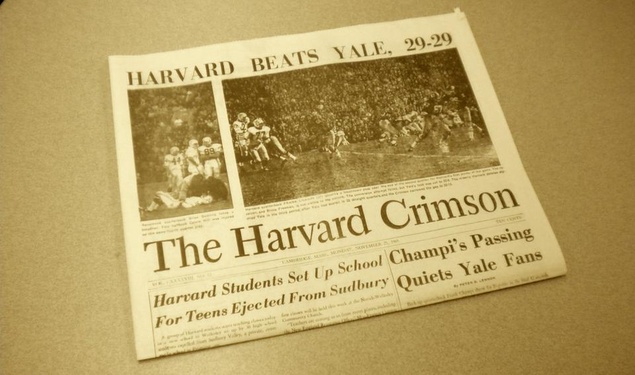
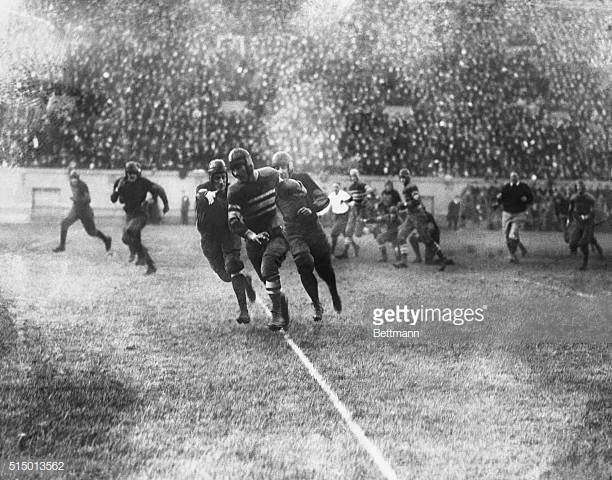
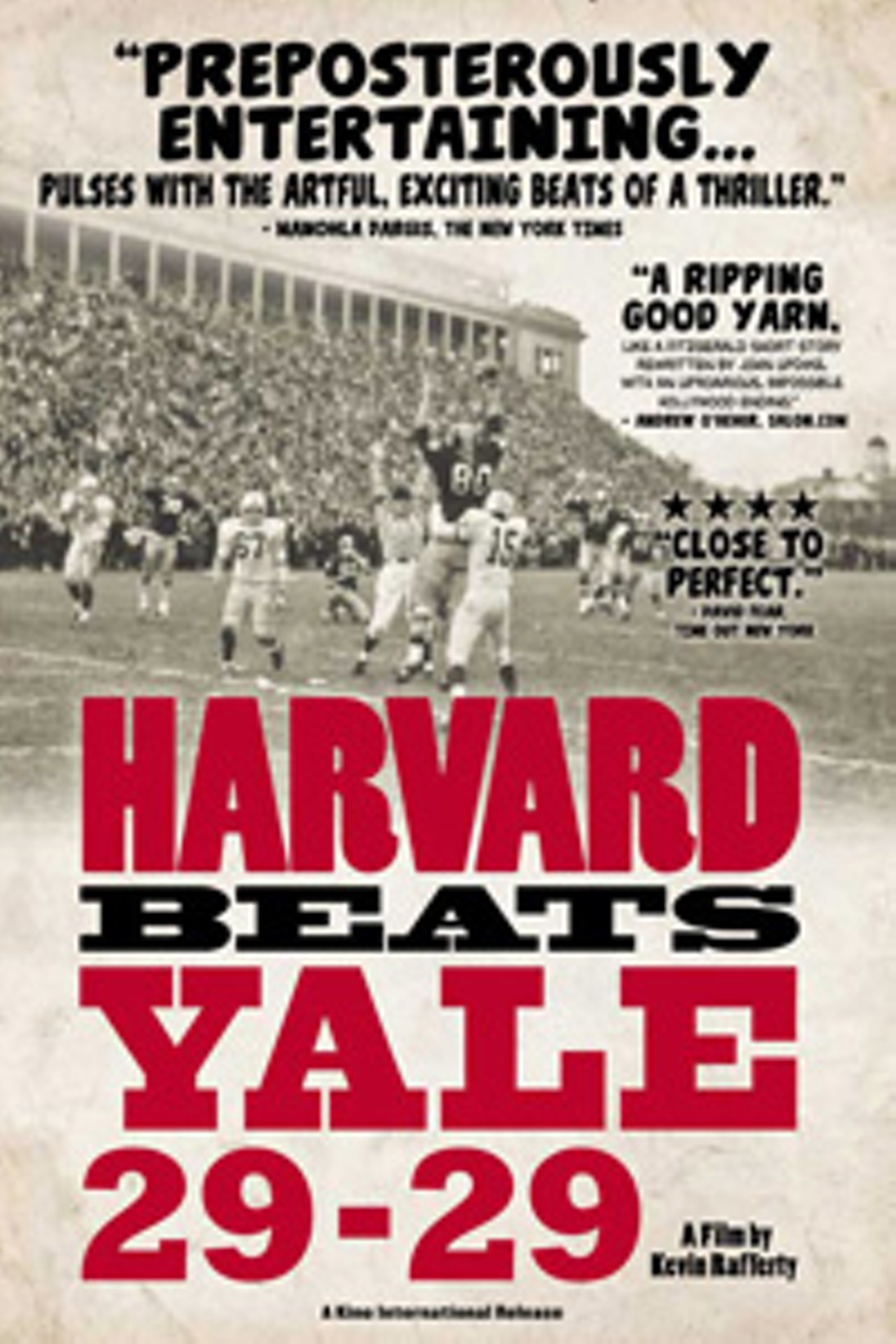
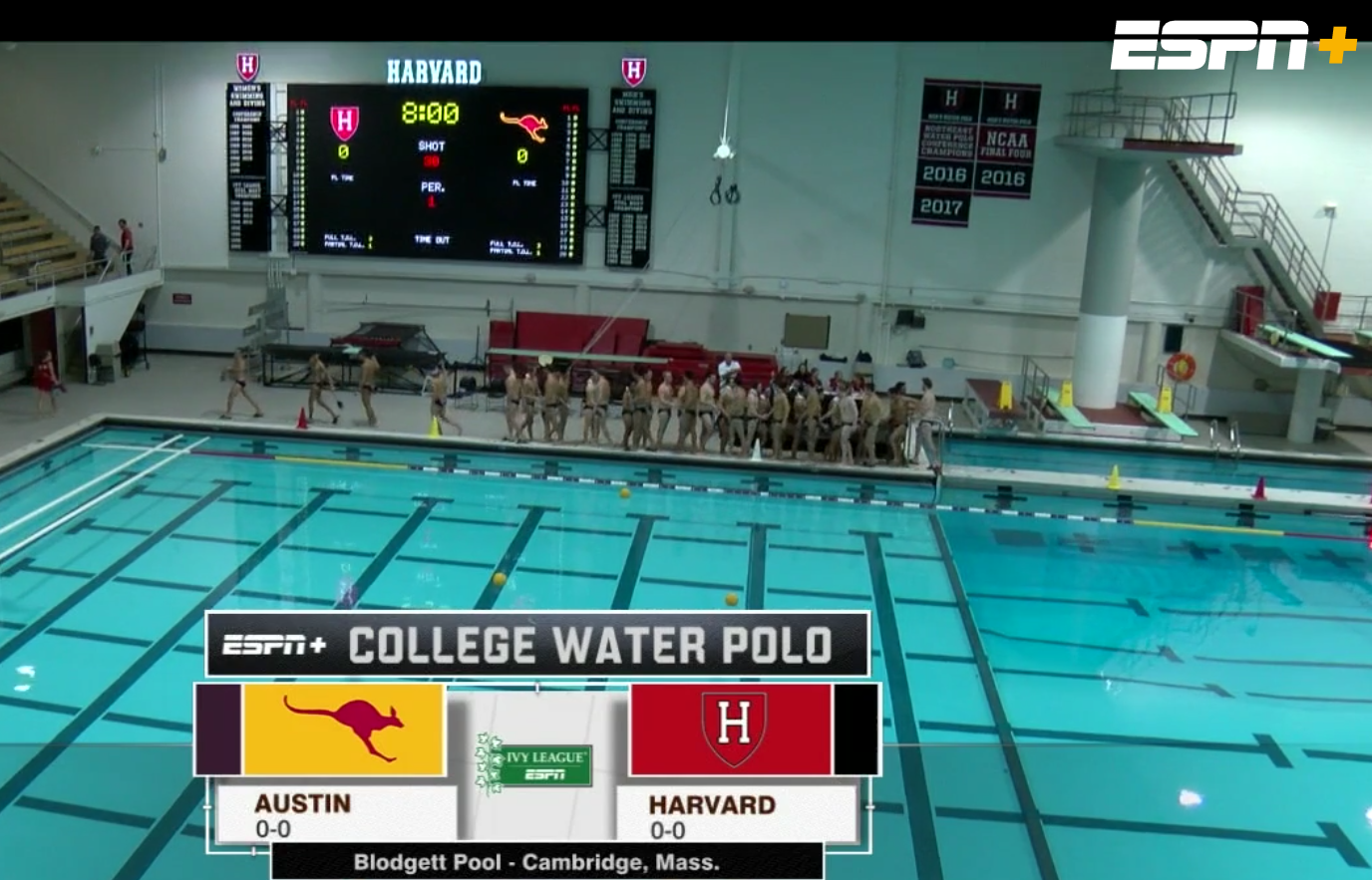

Preview #3:
It’s September 9th, 2018.
100 years ago on this very day, Babe Ruth took to the mound at Fenway in Game #4 of the World Series. He pitched 8 innings, surrendering 2 runs and getting the 3-2 Boston win. In the top of the 4th, Ruth retired three straight batters. In the bottom of the 4th, Ruth smacked a triple to RF, scoring two runs. The Bambino was a World Series starting pitcher who was also batting in the heart of the lineup. Since that game, every World Series starting pitcher has batted 9th (or not at all). Two days later, the Red Sox took the Series 4 games to 2.
September is Boston month here at Go Roos Central! Next weekend’s Roo Tale preview concerns a Boston football game that ties into the AC story. But today, it’s Boston, AC & baseball.
My son gave me a gift. I can’t prove it. But I believe.
Mr. A. had a challenging arrival into this world. Complications eventually led to Mom & Dad basically living in the St. David’s Hospital Neonatal Intensive Care Unit (NICU) for 8 weeks, until it was finally time for him to come home. You should have seen the bills. Luckily, we had good public health insurance. Every extended American family of a potential NICU baby should have good public health insurance, which means that every American family should have good public health insurance.
But Mr. A. did me a solid. He timed his challenges perfectly.
I can vaguely recall being interested in the Boston Red Sox as a young child. But I became a HUGE fan in 1986, when I was barely able to drive a car.
No organization should have to go through what the Red Sox endured that year. Up 3-2 in the World Series and up 2 runs in the 10th with two outs and nobody on, it was over. I mean over. The Red Sox were going to win the World Series. All that was needed was one more strike.
Then New York got a single. Then another. Then another. A wild pitch tied the game. And finally Buckner. An error by Bill Buckner “behind the bag” allowed Ray Knight to score and the Mets to win. They won Game #7 the next day.
It was tragic what happened to Buckner’s team. I quickly learned that it was near epic that the team which endured this agony was in fact the Boston Red Sox.
The Curse of the Bambino is the belief that the Red Sox would never win the World Series after a 1920 trade of Babe Ruth to the New York Yankees in exchange for money to fund a Broadway show. The Red Sox had last won a World Series title in 1918.
Then the futility began. Funny though, the Curse of the Bambino almost never got off the ground because of a little school in Grayson County, TX. A mere 26 years after the trade, it was almost ended by an Austin College alumni. But a former Austin College coach thwarted the effort. The Curse lived on.
Boston & St. Louis had locked horns in Game #7 of the 1946 World Series, and the Cardinals went ahead in the eighth on Enos Slaughter’s “Mad Dash” from first. Whether or not shortstop Johnny Pesky briefly “held” the throw to home allowing Slaughter to just arrive safe is yet another story in the long list of Curse legends. Boston fans forgave though, and named “Pesky’s Pole” in Fenway’s right field for their Sox hero.
Still, the game was not yet over. There was one last inning.
The Red Sox trailed by one run in the ninth with two outs. Boston put men on first and third, and up to the plate walked Austin College Kangaroo and Red Sox utility slugger Tom McBride. McBride, a Bonham native and 1936 graduate of AC, played on the 1935 Kangaroo Texas Conference championship team. Baseball called after graduation though, and he embarked on a 15-year professional baseball career that included 8 years in the majors. His best year was 1945 with the Red Sox, when he hit .305 over 344 at-bats. His .301 average in 1946 made him a valuable asset for Ted Williams’s club that year.
A single by McBride would tie the game. An extra base hit would put Boston up in front and possibly give Williams the World Series ring he never earned. It would also potentially end the Curse before it even started. But St. Louis Manager and former Austin College Kangaroo skipper Eddie Dyer headed to the mound to chat with his relief pitcher about how to get that final out.
Eddie Dyer was a standout pitcher for Rice University in the early 1920s; his manager in Houston was legendary AC football coach Pete Cawthon. Dyer, Cawthon, and Rice traveled to Sherman to take on the Roos in baseball in 1921, but came home in defeat. By 1923, Cawthon was coaching in Sherman and Dyer was an ace for the St. Louis Cardinals.
It was common in the 1920s for baseball players to coach both before and after the season; Cawthon pleaded with Dyer to come to Sherman and assist his efforts; Dyer agreed, and spent a number of seasons coaching AC football and baseball. So beloved by the community was Dyer that the city of Sherman held a parade in his honor after the Cardinals won the 1926 World Series. The mayor declared it “Eddie Dyer” day.
His playing days over, Dyer headed back to Texas to manage the Houston Buffaloes within the Cardinals organization. His success eventually won him the top skipper job in 1946 for the Cardinals back St. Louis; in his first year, he had led his old team to the World Series. Now, with the entire Series on the line in the ninth inning of Game #7, this former Austin College coach walked to the mound to chat about how to retire this former Austin College ballplayer.
The chat worked. McBride hit a groundout to second. The Curse would live on for another 68 years with one heartbreak after another.
1948: a one game AL pennant playoff lost to the Indians
1949: a last weekend series loss to the Yankees
1967: the impossible dream ends in a 7-game World Series loss to the Cardinals
1975: in spite of Carlton Fisk’s dramatic home run in Game #6, the Reds win in 7.
1978: Bucky Dent beats the Sox in a one game AL pennant playoff. The Red Sox are the only team in AL history to lose two one-game playoffs.
And 1986.
The Fletcher School of Law & Diplomacy (International Studies) at Tufts University in Boston came calling for me in 1993. I’ll be honest. One of my first thoughts? The Sox! Maybe I’ll get to watch the Sox finally win the Series. Didn’t happen, but I did see some quality Sox games.
The best one was 1995. The Yankees were in town, and the game was tied in the bottom of the ninth. We were in the center field bleachers when Mike McFarlane shot a rocket right towards our group. Home run. Crowd goes crazy. Boston beats the Yankees 3-2.
There was also the 1999 evening with colleague and friend Joe Micale. We headed to Landsdowne Street behind the Monster during the homerun derby of All Star weekend. Mark McGwire, fresh off of his 70 HR season, began to launch rockets over the famous left field wall. The crowd was packed shoulder to shoulder, trying to catch balls as they dropped into the crowd. Then McGwire came up. Some of his shots seemed more like satellites, traveling horizontally over us like Sputnik and headed for the MA turnpike. The crowd stopped cheering and starting “wowing”.
We even traveled outside of the region to see the Sox. When Southwest offered some ridiculous fares to BWI, Micale and I plus a few others at Putnam Investments snagged some flights for a trip to a Sox game at Baltimore in the summer of 1998.
Want to hear an amazing stat? Baseball workhorse Cal Ripken Jr. had broken Lou Gehrig’s 2,130 consecutive games played streak in 1995. By the time we saw him at Camden Yards against the Sox in 1998, he had played in ~450 additional games. Those ~450 additional games? Longest streak in the majors. Ripken broke Gehrig, and then immediately began another Gehrig. Ripken chose to sit on the last day of that 1998 season. The streak came to an end at 2,632.
Micale grew up playing baseball, at a time when Massachusetts High School playoff baseball was held at Fenway. Later, Micale was a member of his Stoneham (MA) HS squad. They eventually made the playoffs, the same year that Red Sox ownership decided to no longer host Fenway games in the HS tournament. Joe, that’s still painful to remember after all these years. Can y’all imagine the excitement of being a 16-year old kid in the batter’s box with a view of the Monster?
In 2000, Texas told me it was time to come home. But my Sox fandom remained.
2003 was the year. The Red Sox had a 3 run lead in the 8th of Game #7 in the ALCS against the Yankees. But Pedro Martinez couldn’t hold it. Aaron Boone sent a rocket to left field in extras; I watch silently in my study as the ball left Yankee stadium, understanding that it was 1986 once again. It’s always 1986 as a Sox fan.
The Sox were back in October of 2004, and Mr. A was on the way. Once again, it was Boston vs. New York in the ALCS. But this time it was a rout. New York built a 3-0 lead on the back of a 19-8 massacre at Fenway. It was all over. No one in the history of Major League Baseball had ever erased a 3-0 lead. The 86-year drought would continue. Of course it would. The Red Sox always break your heart.
Then the magic happened.
There will never be anything to equal the improbability of the Red Sox being down 3-0, down a run in the ninth in Game #4, and proceeding to win 8 games in a row. The Millar walk, the Roberts steal, and the Mueller RBI off of Mariano Rivera. Ortiz wins it with a HR in the 12th. Ortiz wins Game #5 with an RBI single in the 14th. Schilling and the bloody sock in Game #6. Johnny Damon in Game #7. The absolutely crushing inevitability of the Boston dominance over St. Louis in a four game World Series sweep.
“Back to Foulke. Red Sox fans have longed to hear it. The Boston Red Sox are World Champions.”
The last out of the 2004 World Series was made by St. Louis’s Edgar Rentaria. He wore #3. Babe Ruth’s number. The last out of the 2004 Series was also made in St. Louis, just down the road from where AC’s Eddie Dyer bested AC’s Tom McBride.
The Curse of the Bambino was retired on a glorious October 27th day in 2004.
The next day, the complications arrived. We were in the hospital. Our long journey towards birth and return home was just beginning. Much of 2004 and 2005 would be a blur. Today, Mr. A. is doing well and is just two years removed from driving a car himself. We’ve come full circle.
I can envision Mr. A. in 2004, as the Red Sox were on that incredible 8-game streak. He knows what lies ahead for Mom & Dad, but he’s holding out as long as he can. “Dad, enjoy the end of the Curse of the Bambino. I can keep things at bay while you do. But as soon as the miracle is complete, get ready.”
Today, the Red Sox have the best record in baseball. My Sox fandom is not quite the passion it used to be, but that loss is more than made up by the incredible story of 2004. It’s always the stories that bring us back.
More Boston Roo Tale previews to come:
9/15 Tufts University @ Harvard: the “first” college football game
9/22 Texas @ Rutgers: 1969, 1869, & a trip from Boston
9/29 It’s a Roo Tale! The Birthplace of Texas College Football
Next Sunday’s preview takes us back to a football game played nearly 150 years go. It has an interesting tie to the next Roo Tale. 150 years is a long time ago.
The Sox winning the Series in 2004 though? James Taylor says it best.
Doesn’t feel like a long time ago…….
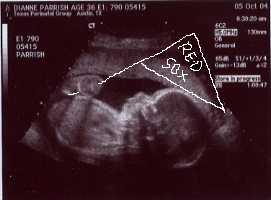


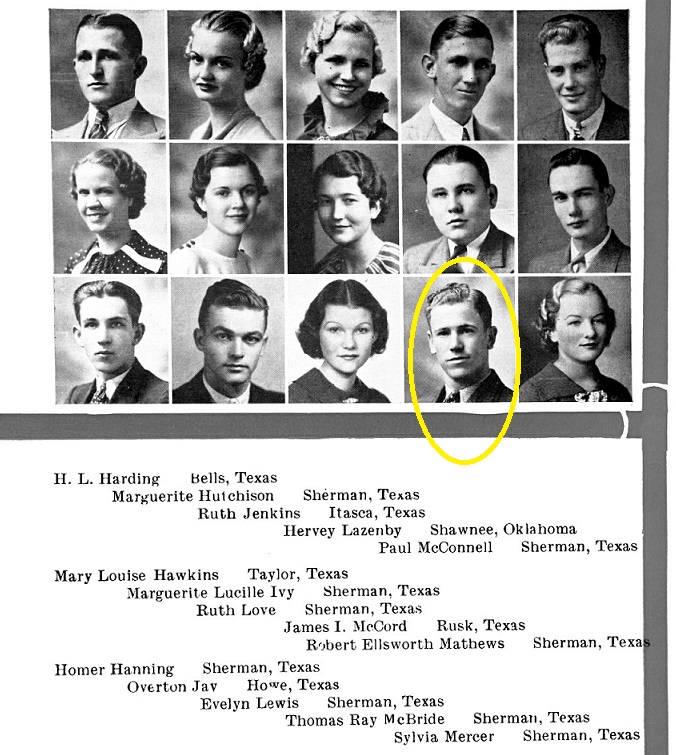

Preview #4:
September is Boston month here at Go Roos Central. This week’s preview involves a Boston area football game a long time ago, and a Massachusetts coaching legend.
Meet Coach Rocco “Rocky” Carzo. He’s got something to say.
Carzo passed away in 2010 after a legendary career at Tufts University, a D3 school in Medford, MA. After a playing career in Delaware, Carzo accepted the head coaching job at Tufts in 1966. He moved on to Athletic Director in 1973, where he remained until his retirement in 1999.
Coach Carzo was a fixture within the national football community. He sat on the Selection Committee for both College Division Bowl Games and the D3 Football Playoffs. He was also a member of the National Honors Court of the College Football Hall of Fame. After retirement, he wrote a book about the history of “Jumbos” athletics at Tufts University. It was his “labor of love,” as he referred to it.
Tufts University is the home of the Fletcher School of Law & Diplomacy. Like Johns Hopkins SAIS, Georgetown SFS, Princeton Woodrow Wilson, and Columbia SIPA, the school is dedicated to the graduate study of International Affairs. Austin College, with its strong focus on international studies, has sent many students to these schools after graduation. I was one; Fletcher was my home from 1993 to 1995.
There, I met some fascinating people who continue to do some amazing things:
Maulyn Lynch Larry Hanauer Eric Sanderson Evelyn Farkas Alexander Zakharov Annika Hansen Björn Gillsäter Caroline Sanderson Diane Tausner De Klerk Donna Demenus Dholakia Duncan Hollis Elena Galaitsi Erin C Conaton Felicia Swindells Fernando Gonzalez Saiffe Karen Hultgren Bruce Ladeene Freimuth Lullit Getachew Mark Baker Martha Bory Culver Wendy Gutierrez Cheeks Christina Caplan Katrina Destrée Julie Jetta
I try to keep in touch with them as best I can. Many of them Dianne and I saw in 2015, at our 20th anniversary reunion in Boston.
After graduation day in 1995, a bunch of us Fletcherites gathered on campus for a softball game on the final weekend of the semester. We played just east of the Ellis Oval, the home of Tufts football since 1892. The Oval stadium entrance is by way of the “Captain’s Gate,” which displays a very special plaque. It’s what this plaque says that is relevant to the upcoming Roo Tale.
Ask the average American football fan about the first ever football game in America, and you’ll often get the answer. 1869. New Jersey. The Princeton Tigers made the short trip to New Brunswick to take on Rutgers on November 6th. Rutgers prevailed, 6-4. The game of American football was born.
If you ask Princeton and Rutgers, they will absolutely tell you they were the first. The College Football Hall of Fame in Atlanta, GA agrees, and goes into detail about that encounter nearly 150 years ago. That game started it all.
But…….what if it just ain’t so? What if the first football game in America occurred elsewhere?
Why is the game of rugby so popular in the Southern Hemisphere? The answer is timing. Soccer was a British export to its colonies in the 18th century; most of those colonies, including the 13 in North America, were found in the Northern Hemisphere. As an 18th century colony, the United States was originally more of a soccer nation.
The game of rugby was born in the 19th century, famously at Rugby College in the UK. That sport found a home in the southern hemisphere as British colonization took greater root in places such as South Africa, Australia, New Zealand, and the South Pacific. A number of sports descend from rugby, including American football.
So how did this new, southern sport of rugby make its way north to America? It’s a quirk of history.
Harvard’s administration had seen enough by the early 1870s. Harvard students were inventing all sorts of physical activity on campus at the time, much of it extremely violent and bloody. Administrators and faculty responded by banning all athletic activity on campus. Games, sports, sweating, none of it was permissible. Harvard would be a place of quiet scholarship. And as Harvard goes, so goes the nation. Yale, Princeton, and other elite northeast schools quickly followed their lead.
The Harvard students, however, were not going to go quietly into the night.
They learned that a new game descended from rugby was all the rage among students at Magill University in Montreal, Canada. A close member of the British Commonwealth at the time, Canada had easily imported rugby from England; the sport would later transform into Canadian football. Harvard students extended an invitation to the Magill team to travel to Cambridge, MA for an unofficial match. The offer was accepted, and the game took place on May 15, 1874 at Jarvis Field (just north of Harvard Yard). The game ended in a scoreless tie.
Tufts sits just a few miles north of Harvard, and students had learned of the upcoming matchup in this exciting new sport. Hundreds of Tufts students were in attendance as fans for the game, and invited Harvard to a match the following year against a newly formed Tufts team. Harvard accepted. The two schools met on Independence Day, July 4th 1875 on the Harvard campus. Tufts scored the game’s only touchdown, and prevailed, 1-0.
It was the first ever game of American football.
But wait! If that’s the case, then what were they playing in 1869 back in New Jersey?
They were playing soccer.
The historical record makes it clear. Princeton/Rutgers was a kicking game. Carrying and tackling were not permitted. Not so in the Tufts/Harvard contest, where carrying the ball and avoiding tacklers were noted throughout. Only in the Tufts/Harvard game were they likely to say “once more unto the breach, dear friends.”
“Ere long five or six Tufts men found themselves laid on their back so violently that they imagined it was evening by the stars they saw. They soon repaid the compliment, however.”, wrote the Boston Daily Globe soon after the game. A letter from the 1875 Tufts football team manager decades later also provides more compelling proof as it describes the lone touchdown. “Harrington eluded the first Harvard would-be tackler and Cushman running interference shouldered off three Harvard players and Harrington scored.”
Football’s popularity exploded at Harvard after the Tufts game. And you know that if Harvard is going to play football, Yale will certainly take it up as well. Princeton soon followed, and by the 1880s football was the game of choice across the northeast. From there, the sport spread west like a wildfire, eventually reaching Texas by the 1890s.
After retirement, Carzo made it his life’s work to set the record straight. The effort began to bear fruit. After acquiring Harvard’s permission to act on their behalf, Carzo began to pressure national newspapers to write about the game. The Boston Globe finally agreed, and wrote about the 1875 contest and Carzo’s efforts in 2004 to set the record straight. Tufts “makes a convincing case that the first true link in US college football’s evolutionary chain was forged when Tufts squared off against Harvard,” wrote Kevin Paul Dupon in the September 23, 2004 edition of the Boston Globe.
The story put the topic in the national spotlight, and began a relatively friendly debate between Tufts/Harvard and their Princeton/Rutgers counterparts. Carzo also had partial success getting the game addressed at the College Football Hall of Fame in Atlanta. While the HOF still lists the 1869 game as the first ever, it now also mentions the 1875 game as the first “resembling what we know as football today.”
For Carzo, it’s simple. As he mentioned just before his passing in 2010:
“You know, we understand, politically, the Princeton/Rutgers game is right there. But just as the game changes, times change. We’ve got the evidence, and the point is, 135 years later, no one says it’s Tufts. Well, it is Tufts, and our family wants to be recognized.”
The plaque on the Captain’s Gate at Ellis Oval makes it clear. Tufts University: the birthplace of American college football.
The first game of college football in the state of Texas is claimed by the University of Texas Longhorns. The UT team traveled to Fair Park in 1893 to take on a Dallas Heavyweights football club in front of a large crowd. There, they upset the Dallas team and returned home victorious. The win for the Longhorns was the first ever game of college football in the state of Texas.
But…….what if it just ain’t so? What if the first football game in Texas occurred elsewhere?
What if a smaller, less prominent school actually has an argument for that honor?
What if, to borrow Carzo’s words…
“…politically, the Texas Longhorns/Dallas Heavyweights game is right there. But just as the game changes, times change. We’ve got the evidence, and the point is, 125 years later, no one says it’s Austin College. Well, it is Austin College, and our family wants to be recognized.”
One more preview to come:
9/22: Texas @ Rutgers: 1969, 1869, & a trip from Boston
The next Roo Tale kicks off the following weekend:
9/29: The Birthplace of Texas College Football
http://ase.tufts.edu/athletics/old/menFootball/press/2004-2005/firstgamebuzz.html
https://tuftsjournal.tufts.edu/archive/2006/october/features/gridiron.shtml

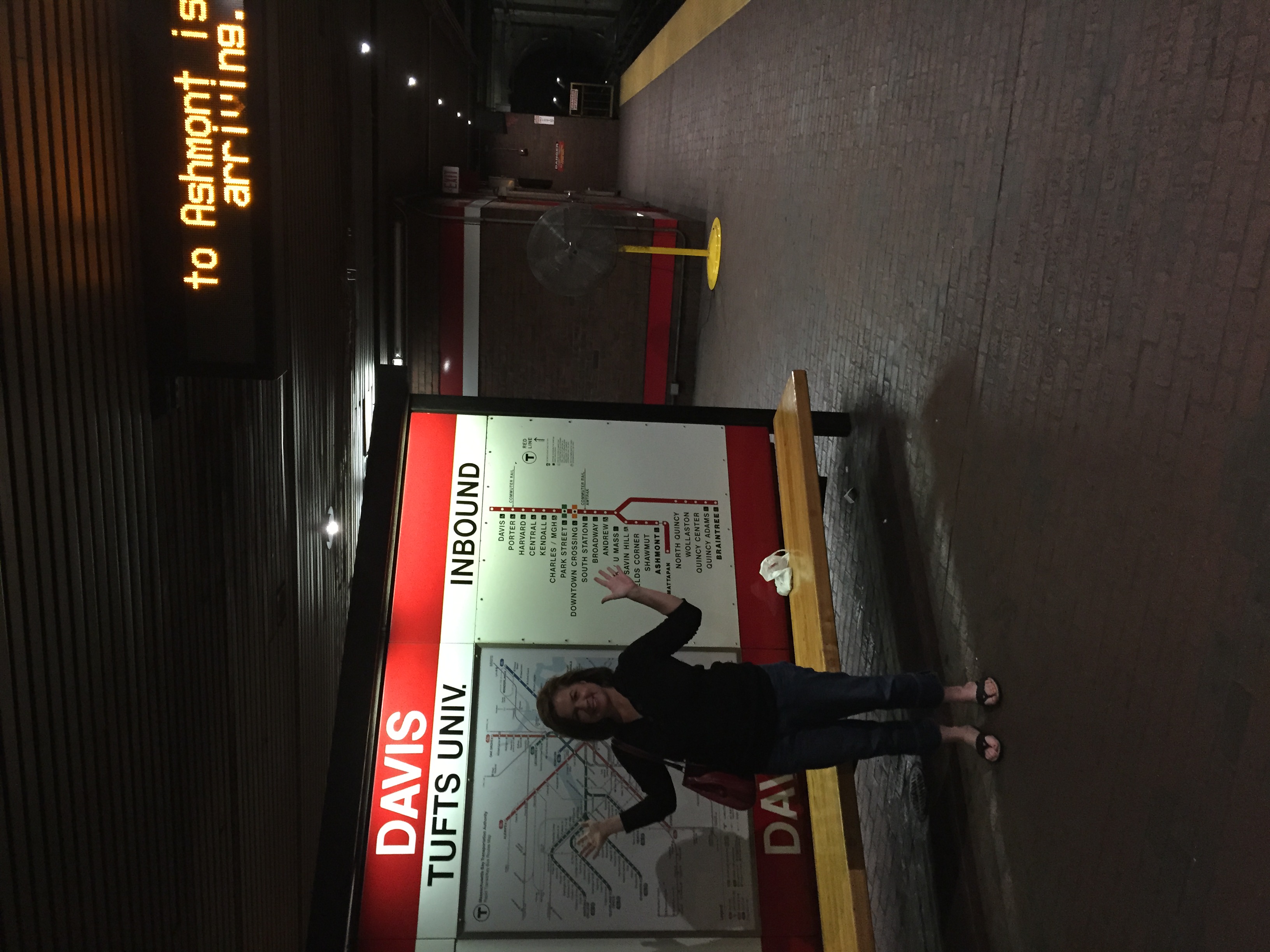




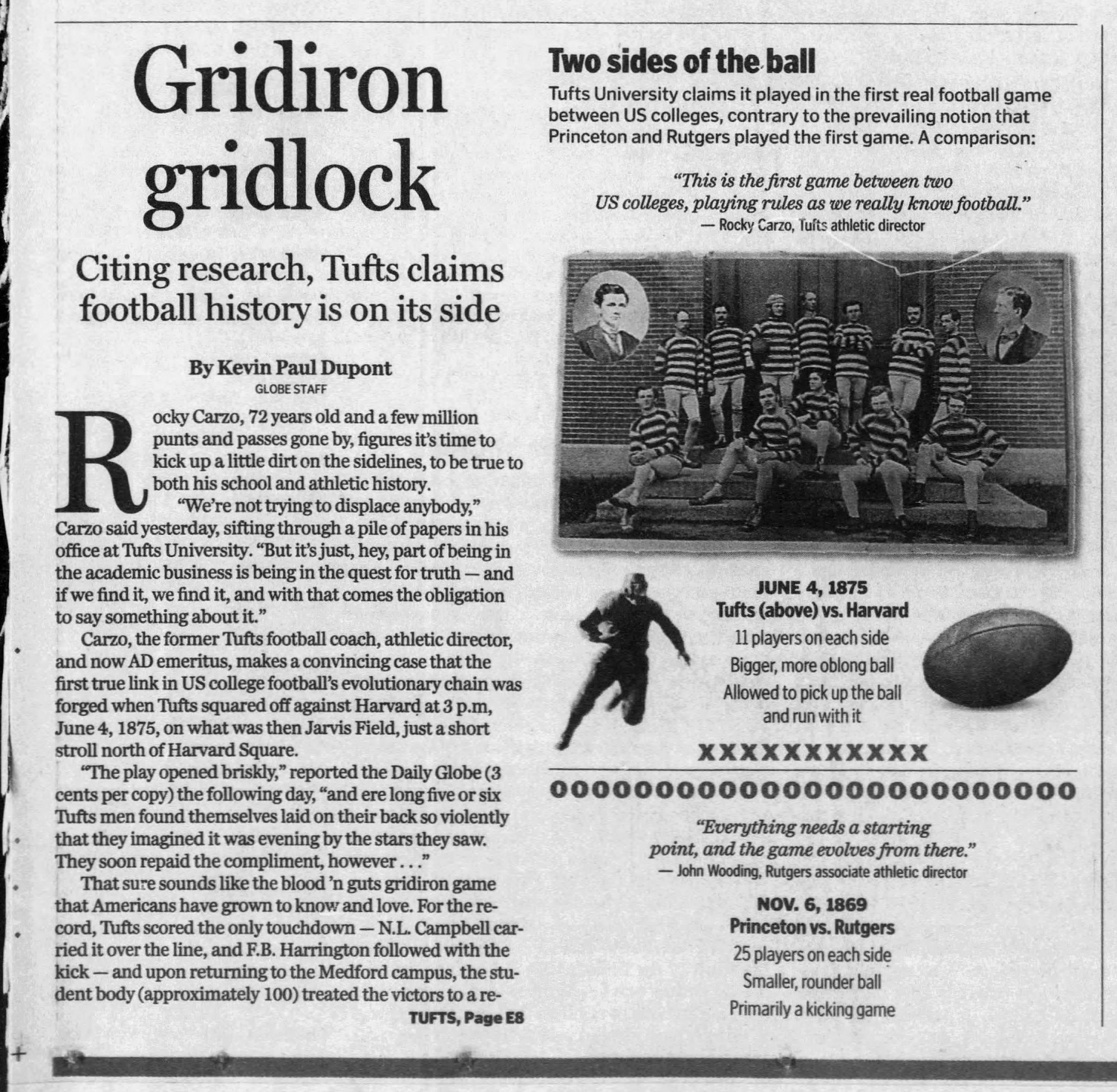

Preview #5:
It’s one of the most iconic photos in college football.
The undefeated 1969 Texas Longhorns were facing Notre Dame in the 1970 Cotton Bowl. It was the first bowl game for the independent Fighting Irish since the Rose Bowl of 1925, the same year Kangaroo Coach Pete Cawthon and Irish Coach Knute Rockne discussed Notre Dame’s upcoming season opener against SWC champion Baylor. Cawthon’s Roos had defeated the Bears that year; both the Longhorns & Aggies had come up short.
Darrell Royal’s Longhorn squad had already clinched a national championship before the game in most polls, but were looking to complete a perfect season. In what was built up as the “Game of the Century,” #1 UT had defeated the #2 Arkansas Razorbacks in Fayetteville in dramatic fashion just weeks before. Texas would eventually find the end zone late, and seal a 15-14 win. Richard Nixon flew in to award Royal the national championship. The game is featured prominently in the Freddie Steinmark inspired movie “My All-American.” Barney Welch, the grandfather of my former tennis teammate Melissa Wait Simmons, was part of the officiating crew.
Ara Parseghian and his Heisman candidate QB Joe Theismann were looking to score the upset for the folks in South Bend. They almost pulled it off. Down 17-14 late in the game, Texas QB James Street led his Longhorns deep into ND territory. With 2:26 remaining, UT faced a fourth-and-2 on the Irish 10-yard line. Royal called a timeout to talk it over with his senior QB. There, while discussing what to do, the AP snapped the iconic photo. Texas converted on a tough 8-yard throw by Street, and the Horns were in the end zone three plays later. The national champions finished the season with a perfect record.
It’s all right there in the photo. The Hall of Fame Coach. The game winning QB. The Cotton Bowl scoreboard displaying the pivotal moment. And the excited Texas crowd.
There’s also something else. Check out Street’s helmet. “100”.
To honor the 100th anniversary of the 1869 football game between Princeton & Rutgers, the Longhorns and other teams across the country wore the “100” football patch for the entire season. Just as Rutgers claims to have played the first college football game in the nation in 1869, the Longhorns claim to have played the first college football game in the state of Texas in 1893.
Ironically, I’ve actually seen UT & Rutgers play each other in football. My Longhorn brother had moved up to the east coast in 1999 while I was in Boston, and the Horns were headed to New Jersey for a game with the Scarlet Knights. We met in New Brunswick in early September to root for a young Horns team led by a new coach named Mack Brown. Brown goes into the College Football Hall of Fame this year, alongside Austin College Kangaroo Mel Tjeerdsma. Tjeerdsma was honored yesterday in Sherman by the National Football Foundation as part of Mel Tjeerdsma Day at Austin College.
The Horns won comfortably, 38-21. Major Applewhite had a big day. Heavily recruited freshman and New Jersey resident Chris Simms (son of NY Giant QB Phil Simms) even saw some action. When he entered the game, Rutgers fans booed as if betrayed by his departure to Texas. Come on, Rutgers. You don’t REALLY expect a prospect like Chris Simms to stay local now do you? 🙂
The game was played at Rutgers Stadium (now HighPoint.com Stadium) on campus. The stadium today bills itself as the “birthplace of college football.” That’s understandable, even if Tufts and Harvard would strongly disagree. The 1869 game with Princeton was played at College Field, less than a mile away from Rutgers Stadium.
One month later, I was back in Boston watching the Horns face Nebraska on TV with Roo and Husker fan Frank Tooley in Boston. Winter had arrived early up north, and Austin, TX was glowing in the sun. Wayne Whitmire was in attendance at DKR, and Texas upset the #3 team in the country. A light bulb went off during that game. It was time for me to think about leaving the cold of Tufts, Harvard, and Boston for the warmer pastures of AC and the state of Texas. I was soon headed home.
Last week’s preview mentioned the 1869 Rutgers-Princeton football game, and its place in the history of the sport. It also asked a long debated question. What if that game was not actually football? What if the honor of the “first” football game in the nation actually belongs to the 1875 Tufts-Harvard contest? Suggest that in New Brunswick, and you are sure to get an earful.
The University of Texas Longhorns claim the first college football game in Texas, a win in Dallas in 1893. At the time of the game, football was primarily a game for laborers. University scholars were not expected to play the game, much less win. Yet that is exactly what UT did when it traveled to Fair Park and knocked off one of the best club teams in the state.
100 years later, Kirk Bohls and John Maher published “Love Live The Longhorns! 100 years of Texas Football.” The 1993 book documents each UT season since 1893, and notes that the Longhorns were the “first” Texas college to participate in this new sport of football. The book’s cover displays the Street/Royal photo, as well as the 1969 UT/Arkansas game ball.
From Bohls & Maher:
“The initial year of organized football at the University brought Texas its first undefeated season and featured a showcase event that established the brawling, controversial new sport in the Southwest.”
“In 1893, football was a curiosity in Dallas and Austin. Yet fans were being introduced to a sport that had been around for almost a quarter of a century. The first college game was played in 1869 by Princeton and Rutgers.”
The game is mentioned in “Longhorn Football: An Illustrated History”, written more recently by Bobby Hawthorne. Hawthorne writes about that first win in 1893:
“The importance of the win can’t be overstated. It so galvanized university support for the team and the sport that three other games were hastily scheduled. In no time football caught on among the students at UT and served as the most powerful integrating force in student life.”
UT football & 1893 also make an appearance in an article in the West Texas Historical Association Year Book. In “Rabid Advocates for Fair Play in Football: H.J. Lutcher Stark and L. Theo Bellmont’s Vision Becomes the Southwest Conference,” authors Karla J. Chapman, Pee Wee Roberson, and Stacy A. Jacob mention the following:
“According to [Richard] Pennington, ‘This semi-organized game of mayhem [football] won collegiate sanctions at the University of Texas (UT) in 1893,’ and soon other schools throughout Texas followed.”
You may know Dr. Stacy Jacob as a professor of Student Affairs in Higher Education at Slippery Rock University. You may also know Dr. Jacob as the Austin College Kangaroo mascot circa 1988-1992.
In the state of Texas, football is king. That first Longhorn game on November 30, 1893 dramatically increased interest in the sport in Texas. It also allowed UT to declare itself the first college to play the game of football. It all happened on a big day for the game nationally. Thanksgiving Day. November 30, 1893.
Funny thing about that day, though. The Longhorns weren’t the only ones playing.
It’s a Roo Tale!
One last preview on Saturday, September 29th. The next Roo Tale kicks off on Sunday, September 30th. It’s titled: “The Birth of Texas College Football.”
9/30 Chapter 1:
Baylor 1899: Arrival of the Revivalry
10/1 Chapter 2:
TCU 1896: Horned Frogs join the party
10/2 Chapter 3:
Austin College 1896: Kangaroos officially make it three
10/3 Chapter 4:
Texas A&M 1894: Aggies and the Thanksgiving Day rivalry
10/4 Chapter 5:
Texas 1893: Longhorns and the birth of Texas College Football
10/5 Chapter 6:
Wait, What???
10/6 Chapter 7:
Austin College 1893: Kangaroos and the birth of Texas College Football
Former players of Coach Mel Tjeerdsma, including my former Boston “Roo”mate Frank Tooley, lined the field yesterday at Louis Calder Stadium on Mel Tjeerdsma Day at AC. Coach Tjeerdsma’s last year at AC was 1993.
I joined former player Kirk Hughes in the booth to call the game. Hughes was a member of Coach Tjeerdsma’s last squad in 1993.
A big thank you to Hughes teammate Art Clayton for his AC football footage online. For this story, I’ve borrowed Clayton’s footage from that last season in 1993.
1993, the “unofficial” anniversary of 100 years of AC football, plays a role in this tale.


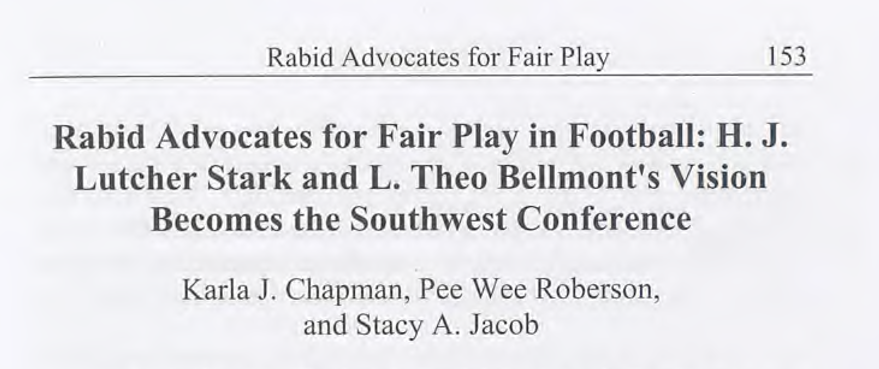
https://www.amazon.com/Long-Live-Longhorns-Years-Football/dp/0312093284
https://www.amazon.com/Longhorn-Football-Illustrated-Bobby-Hawthorne/dp/0292714467

